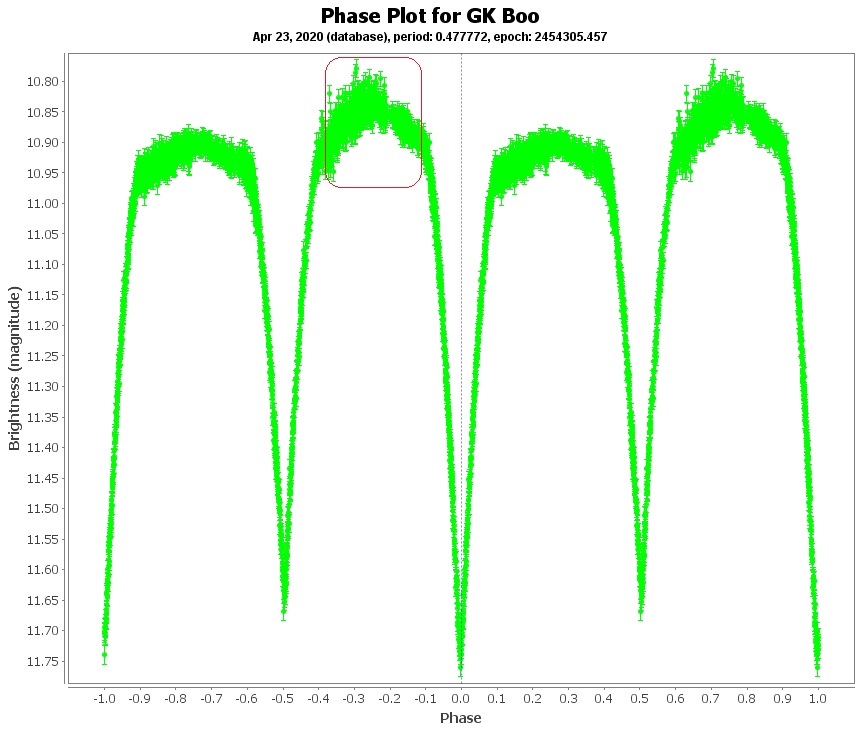Eclipsing Binary Star System: GK Boo (Part 1)
Photometry with your CMOS or CCD camera has always been and continues to be of great importance to science. There are many different types of variable stars. There are Cepheid type stars that are useful for measuring the distance to galaxies, and then there are Eclipsing types of which ‘GK Boo’ is one.
The ‘GK Boo’ binary system consists of two spectral class M stars (red) that revolve around a common center of mass every 11 hours 28 minutes. You can set your watch by it. When you think about it, it is incredible when you consider that Jupiter rotates around its polar axis every 9 hours 55 minutes yet these two massive stars revolve around each other every 11.5 hours! Think about what that must look like from a hypothetical planet. It’s the stuff of Science Fiction.
The entire light curve of ‘GK Boo’ cannot be captured in a single night so it must be spread out over multiple sessions. I will be using two software applications to make this work: AstroImageJ and VStar. I’ll have more to say about these in Part 2 of this series.
Anyhow here is the result of last night’s work:
This is a plot of 240x 30-second frames that spanned 2 hours time. Each frame was calibrated and aligned using AstroImageJ. To measure the small light fluctuations I compared the pixel values of the variable star to the pixel values of a nearby constant-brightness star.

And here is a plot of the entire light curve of ‘GK Boo’ over its entire period. The data came from AAVSO’s database. I’ve drawn a rectangle around the 2 hour time span that I captured. Notice the similarity of shape.

Over the course of the next several days, weather permitting, I will capture more data that will fill in the rest of the period.